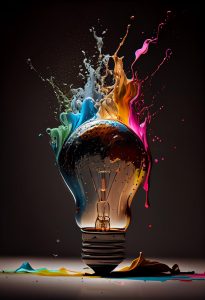In today’s fast-paced digital world, design is more than just about looking good. It’s a powerful tool that can influence how users interact with a brand and impact their overall experience. Whether you’re a designer, business owner, or someone passionate about creating meaningful digital experiences, understanding the importance of design is key to staying ahead.
What is Design and Why Does It Matter? Design is the art of creating aesthetically pleasing and functional products, websites, and experiences. A well-designed product can simplify complex tasks, evoke emotions, and even boost a brand’s credibility. Good design isn’t just about colors and shapes; it’s about crafting a seamless experience that resonates with users.
How Design Influences User Experience (UX) User Experience (UX) design focuses on improving how users interact with digital products. A website with clear navigation, fast loading times, and a user-friendly interface will make visitors feel comfortable, resulting in increased engagement. Moreover, UX design can increase conversion rates—whether that means more sales, sign-ups, or simply visitors staying longer on your site.
- Example of Good UX Design: Websites with minimalist design often reduce cognitive overload and allow users to focus on what matters, leading to a smoother and more enjoyable experience.
- SEO Tip: Use descriptive alt text for your images to help with search engine indexing and improve accessibility.
Key Elements of Good Design
- Color Theory: Colors convey meaning and emotions. Choosing the right color palette can make a huge difference in the perception of your brand.
- Typography: The right font choices can enhance readability and set the tone of your brand.
- Consistency: Consistent design across all digital platforms reinforces brand identity and creates a trustworthy user experience.
- Visual Hierarchy: Organize content in a way that guides the user’s attention to the most important information first.
Design Trends to Watch in 2024 As design trends continue to evolve, it’s important to stay updated. In 2024, several design trends are expected to take center stage:
- Dark Mode: More apps and websites are embracing dark mode, offering a visually appealing alternative to traditional light modes.
- Bold Typography: Bold fonts make a statement and enhance legibility on digital platforms.
- Micro-Animations: These subtle animations create a dynamic and engaging experience.
The Role of Design in Branding Design is an essential part of branding. Your logo, color scheme, and website layout all contribute to how customers perceive your business. A strong visual identity can help build trust, increase brand recognition, and set you apart from competitors.
- Tip for Brands: Consistency in design across all marketing materials, social media, and your website is crucial for building a cohesive brand image.
Conclusion Design is much more than aesthetics—it’s an essential element of creating engaging, functional, and user-friendly experiences. Whether you’re designing a website, a logo, or a product, understanding the impact of good design on user experience can help you create something truly remarkable. By staying on top of design trends and focusing on the needs of your users, you can build a brand that stands out and resonates with your audience.

